The Apple iPad Pro Review
by Ryan Smith, Joshua Ho & Brandon Chester on January 22, 2016 8:10 AM ESTFinal Words
Overall, the iPad Pro has proven to be a very different experience for me than previous iPads. The design is definitely familiar, with the same industrial design and general feel as previous iPads scaled up to a 12.9” form factor. However, the change in size is something that feels like it should have been done from the start. Of course, there are people that will carry tablets in cargo pockets that want something closer to a 7” display and people that carry tablets in purses that want a ~10” display, but if you’re like me and the only way you can realistically carry a tablet is in a backpack then the 12.9” size makes far more sense.
It’s also noteworthy that despite this increased size I didn’t really notice that it had gotten significantly harder to handle in the hands than an iPad Air 2. This is likely helped by avoiding placing heavy batteries at the edges of the tablet, which reduces the moment of inertia and associated hand or arm strain from holding the tablet for hours on end. This is especially important when considering the Apple Pencil which makes it pretty natural to hold the tablet with one hand and draw with the other for hours on end.
On the SoC side, we’re finally seeing a major player in ARM SoCs directly competing with Intel on their home ground of sorts, and the results are at least somewhat shocking. Despite a handicap on process node, the CPU of the A9X isn’t all that far off from Skylake Core M. And while A9X can't go toe-to-toe, Apple is for the first time capable of reaching Intel's level for some workloads. Otherwise on the GPU side, Apple arguably bests Intel. While iOS vs. Windows doesn't lend itself to as precise comparisons as we'd like due to some fundamental architectural differences, for a developer writing a GPU-accelerated application tailored for the platform the A9X’s 12 Cluster Series7XT GPU is capable of doing more than the Core M’s Intel HD 515.
Ultimately Apple's Twister CPU core is now the “new normal” for Apple devices, so I’m not nearly as blown away as I was with the iPhone 6s, but I really do have to emphasize that this SoC is incredibly fast. Currently, it has no real competition in the ARM SoC space, and I suspect it won’t for quite some time even in light of new SoCs on the horizon like the Exynos 8890 and Snapdragon 820, as the SoC is tailored for tablet use rather than a smartphone SoC with more thermal headroom. When combined with the Apple SSD present in this device, it’s hard to complain about performance for the most part.
This strong showing in SoC performance, combined with a noticeable amount of work on the display results in a relatively impressive level of battery life. While it isn’t really better than the iPad Air 2 here, the sheer efficiency of the hardware in the iPad Pro means that the battery is smaller on a relative basis despite the large difference in display size. It’s easy to fixate on battery size as the sole determinant of battery life, but that ignores half the equation. The one notable area where efficiency isn’t as good as one might hope is LTE battery life, but I suspect that the impact here isn’t going to be as noticeable as it is with a smartphone as even with our LTE variant I spent most of my time using WiFi to get work done.
From an internal hardware perspective the one real issue here is the rate at which the iPad Pro charges, which is starting to approach unacceptable levels. Future iterations of iPad Pro really need to ship with a much more powerful charger. Even 4 hours to charge is pretty excessive compared to the 3 hours or so that it takes most laptops to charge or the 2 hours that it takes for a phone to charge.
On the display side, Apple continues to ship some of the best displays I’ve seen in the industry. The iPad Pro is no exception, with a relatively bright panel combined with an incredibly good anti-reflective coating to basically eliminate the disadvantages that come with glossy displays. The move to a new display technology also makes for some truly impressive contrast figures for an LCD, although it’s not a competitor to OLED if you only focus on contrast. As an aside, I suspect microLED or OLED is going to have to take the place of traditional LCDs at some point, as OLED is probably going to be unambiguously superior to even the best LCD by the end of this year if the trajectory of improvement continues.
But LCD or not, the iPad Pro’s display also has incredibly good color calibration. Apple does tend to prefer slightly blue white balance, but I suspect this is mostly a trade-off between color accuracy and power efficiency. For color-critical work in areas like medical and creative industries I suspect that the iPad Pro is sufficient due to its relatively low color shift with changes in viewing angles. It’s also interesting to see that there is clearly evidence of Apple’s custom DisplayPort timing controller (TCON) within the system files, but we basically have to take Apple at their word that this TCON is dynamically switching between 60 and 30 Hz refresh rates as I really couldn’t tell that this was happening in practice, or within system files.
While the basics are critical, the iPad Pro earns its “Pro” moniker on the basis of its accessories, the Apple Pencil and Smart Keyboard. The Apple Pencil is unquestionably the best stylus I’ve ever used in any mobile device. I would argue that the Apple Pencil combined with the iPad Pro is probably the single greatest threat to Wacom’s dominance in the professional market today. We can spend all day arguing about how Apple Pencil has no buttons and has an odd charging method, but for $900 USD you can either buy a Wacom Cintiq 13HD Touch or an iPad Pro with Apple Pencil. If the right apps are available on the iPad Pro, it’s pretty much indisputable that the iPad Pro is going to be a better, more elegant solution for getting stylus-related work done.
Outside of creative work, the Apple Pencil is shockingly good as a pencil/pen and paper replacement. Even with the default Notes app I felt like the iPad Pro is far and away superior to carrying around a folder, notebook paper, pencils, pens, erasers, straight edges, and textbooks. I’ve always been looking for a tablet that could be seriously used for academic work, and the iPad Pro is pretty much what I’ve always been looking for. The Surface Pro 4 comes close to be sure, but I would argue that it really isn’t a proper tablet by virtue of how dependent it is on trackpad input. The stylus also just not as well-implemented as the iPad Pro, which is evident as soon as you try to do perfectly straight diagonal lines. In addition to education contexts, I wouldn’t be surprised to see Apple Pencil take off in areas like point of sale registers. While 3D Touch is great, the Apple Pencil managed to surprise me even more. However, the applications of Apple Pencil are somewhat limited to these specific cases compared to the more universal applications of 3D Touch.
The Smart Keyboard by comparison is a bit of a letdown. While I like using the keyboard a lot when I can set it up on a table or something and do nothing but type out paragraph after paragraph, the trouble is that as soon as some other UI interaction is needed the user experience kind of falls apart. Both setting up and taking down the keyboard takes some time, and doing the motions/origami necessary to do this is not something that can be done carelessly as the Smart Keyboard can and will fall apart/behave unpredictably if you don’t put it together properly. In order to really hit it out of the park, the Smart Keyboard needs to be more stable in the lap, have at least one more useful angle, and be much faster to set up/take down. In essence, the hope is to be able to rival a touch keyboard for bring-up/take-down, but introduce the ability to touch type at speeds that touch keyboards realistically cannot hope to rival. I don’t really think it’s reasonable to argue that the iPad Pro with the keyboard set up is an ideal experience for UI navigation, as using the touch screen is about as ergonomic as a touch screen laptop and using the keyboard for navigation only feels an awful lot like using a command line interface.
In fairness to Apple though, the Smart Keyboard is arguably the right direction for tablets to take. We can talk about how the Surface Pro implementation is better, but I’m still not a big fan of using a trackpad on a “tablet,” and pecking at a display with my finger is arguably even worse. The kickstand also has a lot of issues with lap stability as well, although it does resolve some of the concerns with getting the right angle for proper visibility of the display. The problem of text input on a “pro” tablet is one that needs new solutions, and other than the iPad Pro and Pixel C I honestly haven’t seen anything that comes close to getting in the right direction.
On the software side of things, the iPad Pro continues to be one of the few (if not only) tablets that has an OS and UI that is properly designed for a mobile tablet. Microsoft is doing an admirable effort here with Windows 10, but the sheer difficulties that I have with something as simple as high DPI scaling in Windows is just unacceptable for a tablet. It’s also difficult to deal with the sheer number of legacy applications out there, which really complicates control schemes. I found the vast majority of the time I ended up having to use a stylus or trackpad for simple UI interactions because the touch targets were just too small otherwise. Android has some pretty severe issues with making a tablet UI that is more than just a scaled-up phone UI, which leaves the iPad Pro as more or less the only game in town. There are some issues that stem from the lack of ability for apps to really interface with each other and the difficulty of abstracting away the file system, but for the most part I found iOS to be quite good for getting work done.
However, iOS is not a perfect tablet OS. One real problem here is that the multi-window UI isn’t quite as good as it needs to be. While the current list of apps that fully support this functionality isn’t unmanageable, as time goes on I suspect it will get to be rather annoying to scroll through a long list of apps. There’s also the issue of performance. While there was a time when iOS was just incredibly smooth all the time, I’m starting to notice a trend of apps and general UI tasks that show rather concerning levels of frame drops. I’m not really sure exactly when this happened, but something as simple as scrolling through the Notes app shows frame drops on par with scrolling through Google’s Play Store app. This is definitely an area where Apple should focus on improving, as performance problems shouldn't be a concern with a tablet that's as powerful as the iPad Pro.
While the camera is arguably quite low on the list of priorities for a tablet, Apple manages to deliver one of the best cameras in a tablet today. I honestly wouldn’t advise using it as an actual camera, but as a last resort it works quite well. The speakers are also hugely impressive for multimedia use, and probably beat everything else I’ve ever tried on a mobile device, although this is based upon subjective observation. I found that watching YouTube and movies on this tablet is great when paired with the speakers. People that only use headphones for audio might find this feature pointless, but if you’re sitting in bed or in your room watching a movie it’s definitely convenient to not have to put in headphones while getting acceptable audio quality.
Overall, the iPad Pro is an incredibly good tablet. I’ve always liked the idea of a tablet, but for the most part I’ve been deeply dissatisfied with the implementations of tablets. With the iPad Air 2 review I really emphasized how a proper keyboard and a good stylus would really make the user experience much more compelling, and with the iPad Pro we’re finally starting to see movement towards the tablet that I’ve always wanted. The iPad Pro is arguably the first tablet that I personally want to even consider buying. It isn’t perfect by any means, and there is still a lot of work to be done - seemingly fitting for a first-generation Apple device - but for the first time in a long time it feels like the broader tablet market is advancing once again. If you want a proper tablet that can replace pencil and paper with a keyboard for extended typing sessions, I have no problem recommending the iPad Pro. If you're hoping for a laptop that can also double as a tablet, I suspect that the Surface Pro 4 will remain the right choice for you.


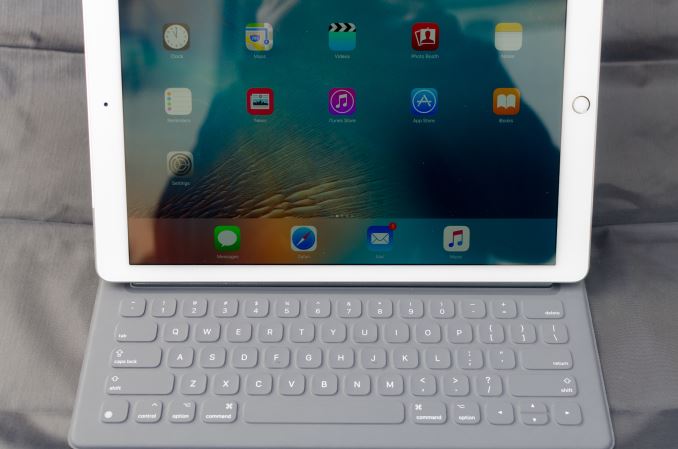
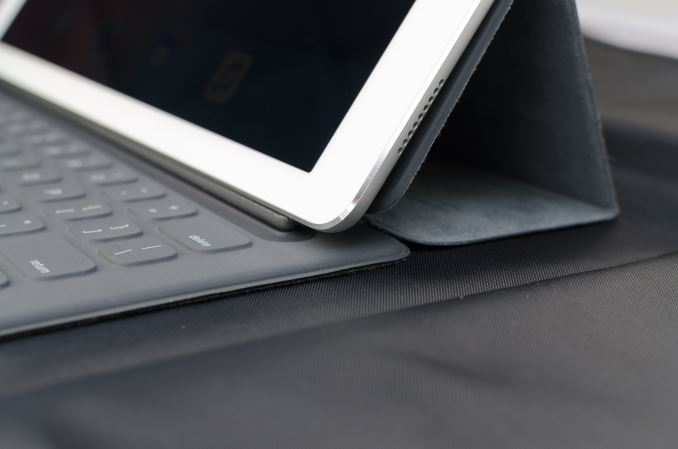

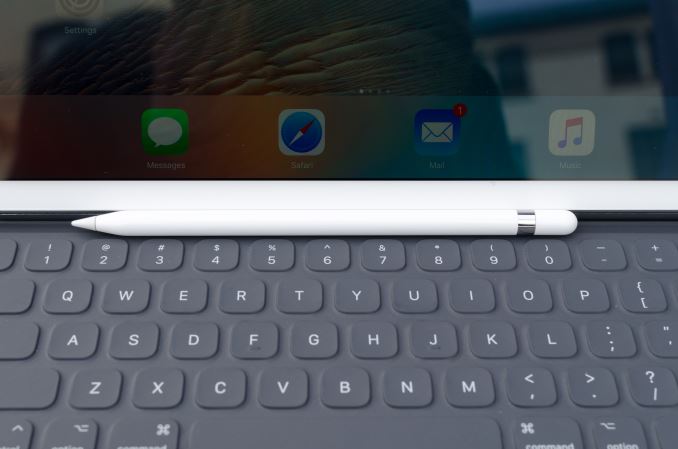
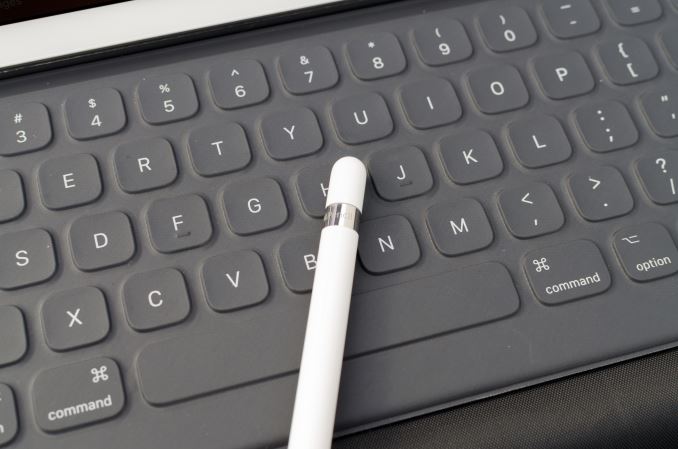

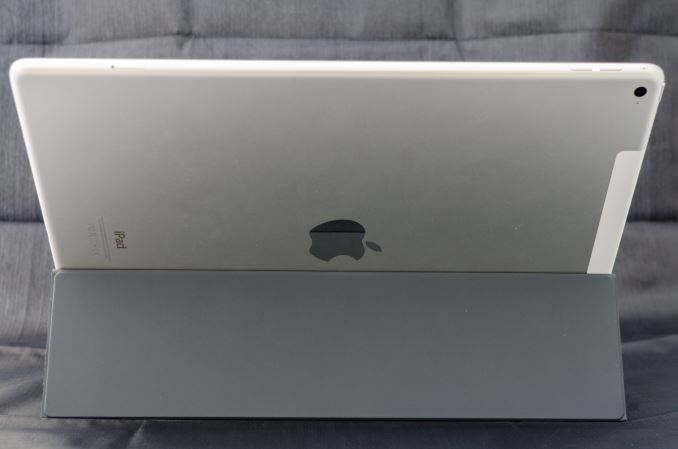
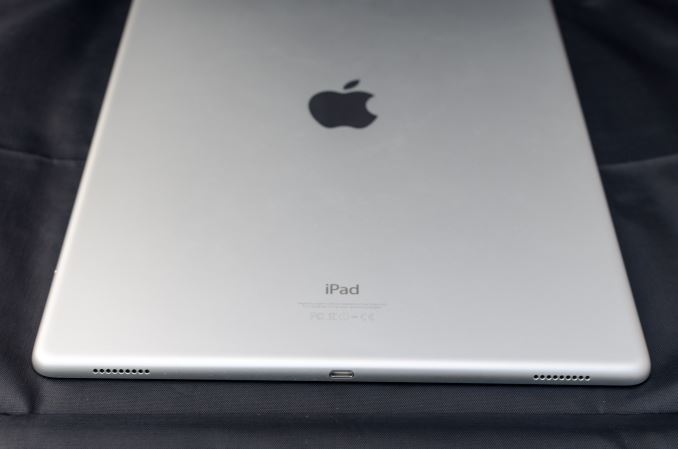
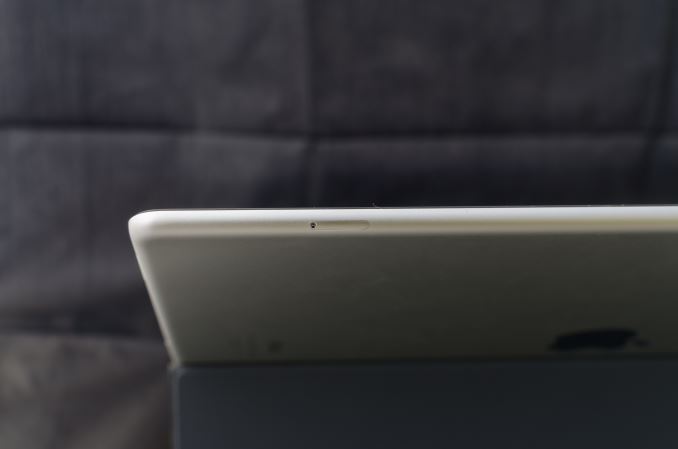
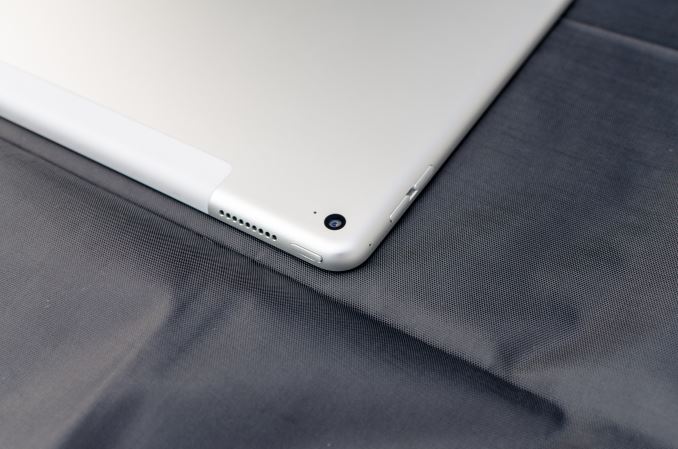
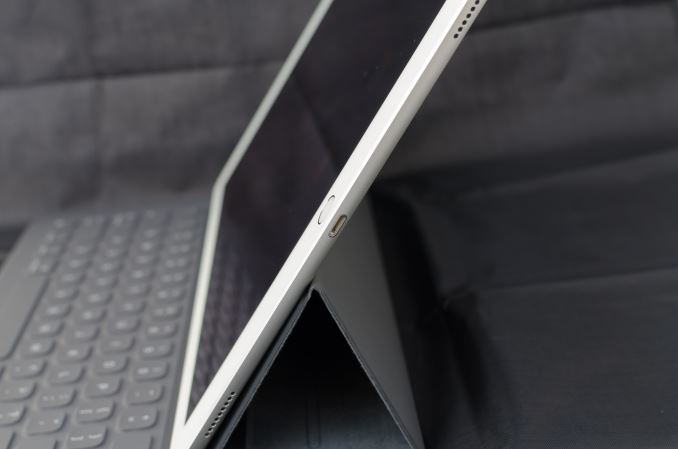








408 Comments
View All Comments
MathieuLF - Monday, January 25, 2016 - link
Obviously you don't actually work in a real office where they require lots of specialized software. What's the point of having one device to complement another? That's a waste of resources.LostAlone - Tuesday, January 26, 2016 - link
Totally agree. For a device to really be useful on a professional level then it needs to be something that is useful all the time, not just when it suits it. If you already wanted a tablet for professional stuff to begin with (a pretty shaky assumption since pro users tend to be working in one place where proper keyboard and mouse are usable) then you need a tablet that can be the only device you need to work on. You need something that you can put in your bag and know that whenever you arrive somewhere you are going to have every single tool you need. And that is not the iPad Pro. It's not even close to replacing an existing laptop. It's certainly very sexy and shiny and the big screen makes it great for reading comics and watching videos on the train but it's not a work device. It's simply not. Even in the only field where it might have claim to being 'pro' (drawing) it's not. It's FAR worse than a proper Wacom tablet because the software is so hugely lacking.It's an iPad dressed up like a grown up device laying in the shadow of actual professional grade devices like the Surface Pro. You get a Surface then you can use it 24/7 for work. You can buy a dock for it and use it as your primary computer. You can get every single piece of software on your desktop plus anything your employer needs and it's easy for your work sysadmins to include it in their network because it's just another Windows PC. Just dumb stuff like iPads refusing to print on networked printers (which happens ALL the time by the way) exclude it from consideration in a professional space. It's a great device for traditional tablet fare but it's not a pro device.
Constructor - Tuesday, January 26, 2016 - link
Your straw man scenarios are just that. In reality most users don't need every last exotic niche feature of any given dinosaur desktop software as a praeconditio sine qua non.Which you also might be able to deduce from the fact that most of those features had not been present on these desktop applications either when "everybody" nevertheless used them professionally even so.
In real life the physical flexibility and mobility of an iPad will often trump exotic software features (most bread-and-butter stuff is very much supported on iOS anyway) where the circumstances simply call for it.
Actual professionals have always made the difference notably by finding pragmatic ways to make the best use of the actual tools at hand instead of just whining about theoretical scenarios from their parents' basements for sheer lack of competence and imagination.
kunalnanda - Wednesday, January 27, 2016 - link
Just saying, but most office workers use a LOT more than simply notetaking, email, wordprocessor and calendar.Demigod79 - Friday, January 22, 2016 - link
Software companies only create crippled, lesser versions of their software because of the mobile interface. Products like the iPad are primarily touch-based devices so apps must be simplified for touch. Although the iPad supports keyboard input (and have for years) you cannot navigate around the OS using the keys, keyboard shortcuts are few and far between and and it still has touch features like autocorrect (and of course the iPad does not support a trackpad or mouse so you must necessarily touch the screen). The iPad Pro does not change this at all so there's no reason why software companies should bring their full productivity suite to this device. By comparison, PC software developers can rely on users having a keyboard and mouse (and now touchscreens as well for laptops and hybrids) so they can create complex, full-featured software. This is the primary difference between mobile and desktop apps. Just like FPS games must be watered down and simplified to make them playable with a touchscreen, productivity apps must also be watered down to be usable. No amount of processing power will change this, and unless the iPad Pro supports additional input devices (at the very least a mouse or trackpad) it will remain largely a consumption device.gistya - Sunday, January 24, 2016 - link
This is just wrong. There are many fully-fledged applications available on iPad. It comes with a decent office suite, plus Google's is free for it as well. I haven't touched MS Word in a couple of years, and when I do it seems like a step backwards in time to a former, crappier era of bloatware.Sure, I still use Photoshop and Maya and Pro Tools on my Mac, but guess what? iPad has been part of my professional workflow for four years now, and I would not go back.
Ask yourself: is a secondary monitor a "professional tool"? Heck yes. What about a third or fourth? What if it fits in your hand, runs on batteries, and has its own OS? Now you cannot find a professional use?
Give me a break. People who are not closed-minded, negative dolts already bought millions of iPads and will keep buying them because of how freaking useful they are, professionally and non-professionally. They will only keep getting more useful as time goes on.
The main legit critique I've heard is a lack of availability for accessories but that's a production issue, not a product issue. iOS 9 has been out for only a few months and the iPad Pro much less than that... companies have to actually have the device in-hand before they can test and develop on it. Check back in another year or two if it's not up to speed for you yet though.
That's what I did, waited for iPad 3, iPhone 3gs before I felt they were ready enough. 3gs for its day was by far the best thing out, so was the 4s. I don't think the iPad Pro is nearly as far back as the iPad 1 or iPhone 1 were when they launched but give it time...
xthetenth - Monday, January 25, 2016 - link
If you consider features to be bloat, I guess you could say that the iPad has full-fledged applications. It's not true, but you could say it. Actually trying to do even reasonably basic tasks in google sheets is horrifying next to desktop Excel. Things like straightforward conditional formatting, pivot tables, the ability to dynamically order the contents of a table and so on might strike you as bloat but they're the foundation of the workflows of people who make the program the cornerstone of their job. An extra monitor is a much better professional tool if it doesn't have its own special snowflake OS with different limitations and way of moving data.Relic74 - Saturday, February 27, 2016 - link
The fffice suits available aren't fully fledged applications, they are still just mobile apps. I can't open 80% of my Excel sheets on the iPad Pro simply because it doesn't support Macros. Visual Basic and Databases. Stop trying to convince everyone that the iPad Pro is a laptop replacement, it's not. It's just a bigger iPad, that's all. Which is fine and has it's uses, but the only people who would use the iPad Pro as an actual computer are the same ones who could get by using a ChromeBook. A professional person could use the iPad Pro, yes but they would have a focused purpose, which means only a few specific apps, the rest of time would be spent on a desktop or laptop computer. It's a secondary device.Relic74 - Saturday, February 27, 2016 - link
Their not crippled, just mobile versions and they have their uses. The problem I have with these comments is when someone says that the iPad Pro is immensely better than the Surface Pro 4. These are completely different devices intended for completely different tasks. These comparisons honestly need to stop, one doesn't buy a Surface Pro 4 to use as a tablet and vice versa. The iPad Pro is a content consumption device first and foremost. Yes there are some productivity apps and certain professions like a musician or an artist could take advantage of the iPad Pro's capabilities however it is not and I cannot stress this enough, is not a laptop replacement . Those that can use the iPad Pro as a laptop are the same types of people who can just as easily get by using a ChromeBook. The iPad Pro is a secondary device where as the Surface Pro is a primary device.IOS is just to limited in it's capabilities to be even considered as a standalone professional device. No, an Architect would not use the iPad Pro to design an house with, the Architect might use one to show off the plans to a client, mark down corrections with the Pencil. No, a programmer would not use the iPad Pro to develope on, he however might use one to create an outline of what needs to be done or even as a second monitor for his laptop. No, a musician would not use one to create his album with, he might use one as the brain for one of his synthesizer, a recording device, instrument, etc. it's a companion device, it's an iPad, nothing wrong with that but stop trying to convince everyone that it's some super computer with fantasy powers. Just the file system issue alone should be enough to tell you that the iPad Pro isn't really meant for connect creation.
FunBunny2 - Friday, January 22, 2016 - link
-- Modern software is very bloated memory consumption wise, especially software relying on managed languages, the latter are also significantly slower in terms of performance than languages like C or C++.well, that was true back in the days of DOS. since windoze, 80% (or thereabouts) of programs just call windoze syscalls, which is largely C++.